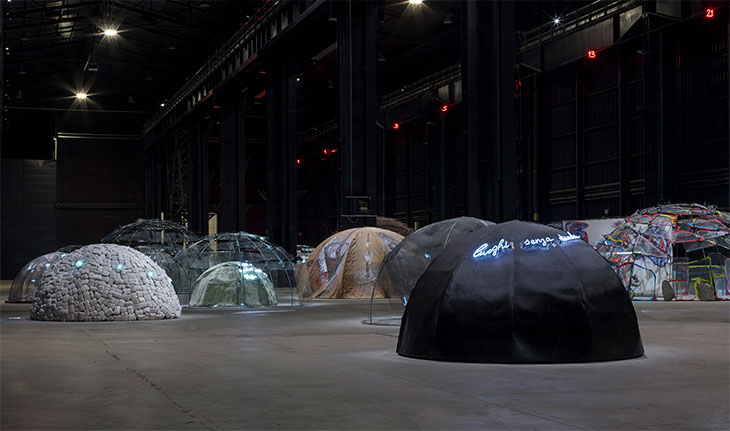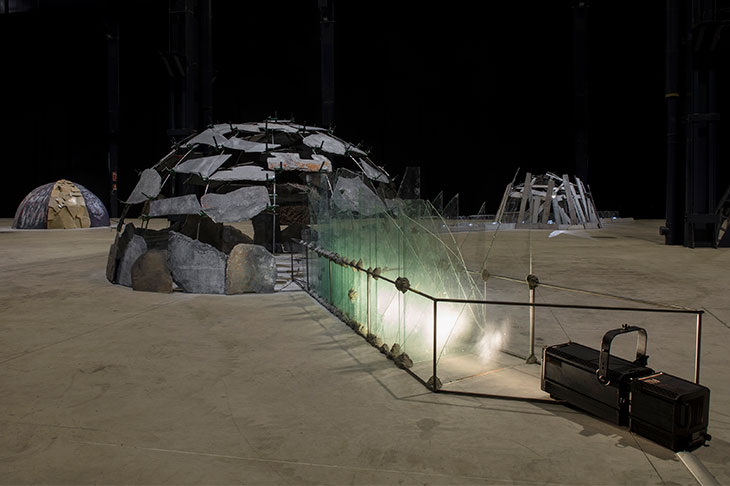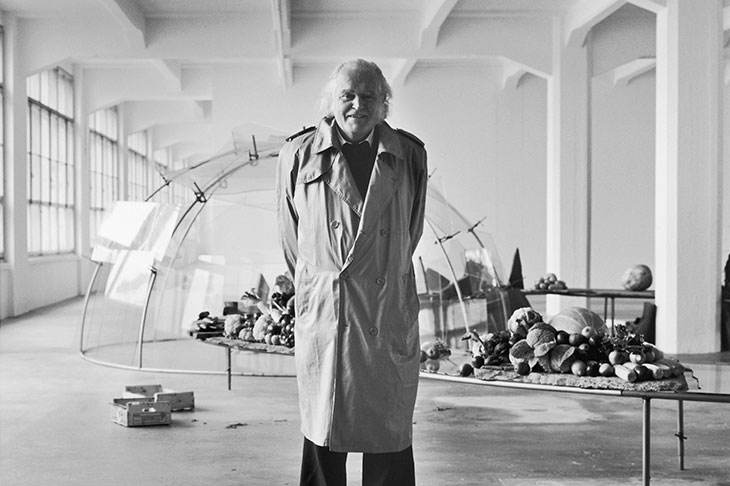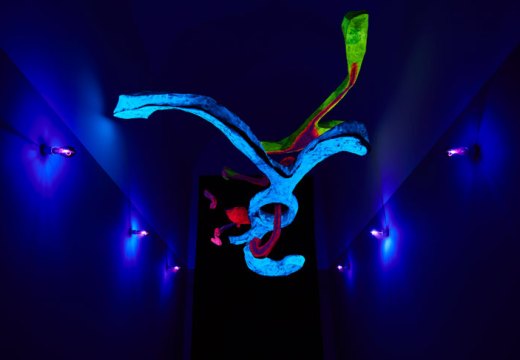Do we go around houses or do houses go around us? The question, written in Italian in neon script, circumnavigates Mario Merz’s work of that title from 1994 – on view in a landmark installation of igloos by the Arte Povera artist at the Pirelli HangarBicocca in Milan. From 1968 until his death 2003, Merz made these semi-spherical structures in combinations of man-made and natural materials. A common feature of modern art museum collections, they are habitually seen individually, and walked around. In this display of 31 examples, the viewer is immersed in what Merz termed an ‘unreal city’, but which for today’s audience might bring to mind an Occupy protest, or a refugee camp.
These contemporary associations are underplayed in the exhibition, which is a homage to the first mass gathering of Merz’s ephemeral architecture, curated by Harald Szeemann at the Kunsthaus Zurich in 1985. There were 12 igloos then; this iteration makes the most of those produced in the intervening period – the enormous La goccia d’acqua (The drop of water, 1987) and Senza titolo (doppio igloo di Porto) (Untitled, double igloo for Porto, 1998) bookend an otherwise broadly chronological display that highlights the artist’s material variations and growing reputation.

Installation view of ‘Mario Merz: igloos’ at Pirelli HangarBicocca, Milan, 2018. Photo: Renato Ghiazza. Courtesy Pirelli HangarBicocca, Milan; © Mario Merz, by SIAE 2018
Merz erected these structures afresh each time they were exhibited, imbuing their alchemistic combinations of materials with a transitory quality. The earliest example, Igloo di Giap, named for the Vietcong general and first shown in Rome in 1968, was reconfigured two years later in Turin, and partially reconstructed in 1985. The most recent, the elaborate tripartite constellation Sposamenti della terra e della luna su un asse (2003), was first presented in São Paulo and made partly using Brazilian stone. This use of local materials amplifies the sense that these are nomadic objects – and indeed, half of those on display have travelled from collections outside Italy.
Given the fragility of the igloos – many feature roughly cut glass held in place with clamps or mastic – this assembly is remarkable. It is particularly welcome to see Tate’s igloo, also titled Do we go around houses or do houses go around us? (a 1985 reconstruction of a work from 1977) on display after a decade in storage. The installation in Milan, led by Merz’s former assistant Mariano Boggia, and aided with historic photographs, has offered an opportunity for a new generation of conservators and technicians to learn how to install these complex structures.

Noi giriamo intorno alle case o le case girano intorno a noi? (Do we go around houses or do houses go around us?, 1977; reconstruction 1985), Mario Merz. Installation view at Pirelli HangarBicocca, Milan, 2018. Tate Collection. Photo: Renato Ghiazza. Courtesy Pirelli HangarBicocca, Milan; © Mario Merz, by SIAE 2018
Nonetheless, the absence of Merz himself is felt in works like the diminutive Is space bent or straight? (1973) a glass igloo containing an Olivetti typewriter, which Merz and fellow artist Emilio Prini entered to type on and read from the machine. In doing so they transformed the structure from dwelling to stage. As with the reconstructions of Lucio Fontana’s environments shown here last year, the HangarBicocca is foregrounding the ephemeral, performative aspects of an increasingly historicised and monetised Arte Povera. Picking a path amongst these itinerant shelters, viewers may find that they resound with new meaning – such as contemporary political, economic and environmental debates around migration.
‘Mario Merz: igloos’ is at the Pirelli HangarBicocca, Milan, until 24 February 2019.
Unlimited access from just $16 every 3 months
Subscribe to get unlimited and exclusive access to the top art stories, interviews and exhibition reviews.














![Masterpiece [Re]discovery 2022. Photo: Ben Fisher Photography, courtesy of Masterpiece London](http://www.apollo-magazine.com/wp-content/uploads/2022/07/MPL2022_4263.jpg)
It’s time for the government of London to return to its rightful home